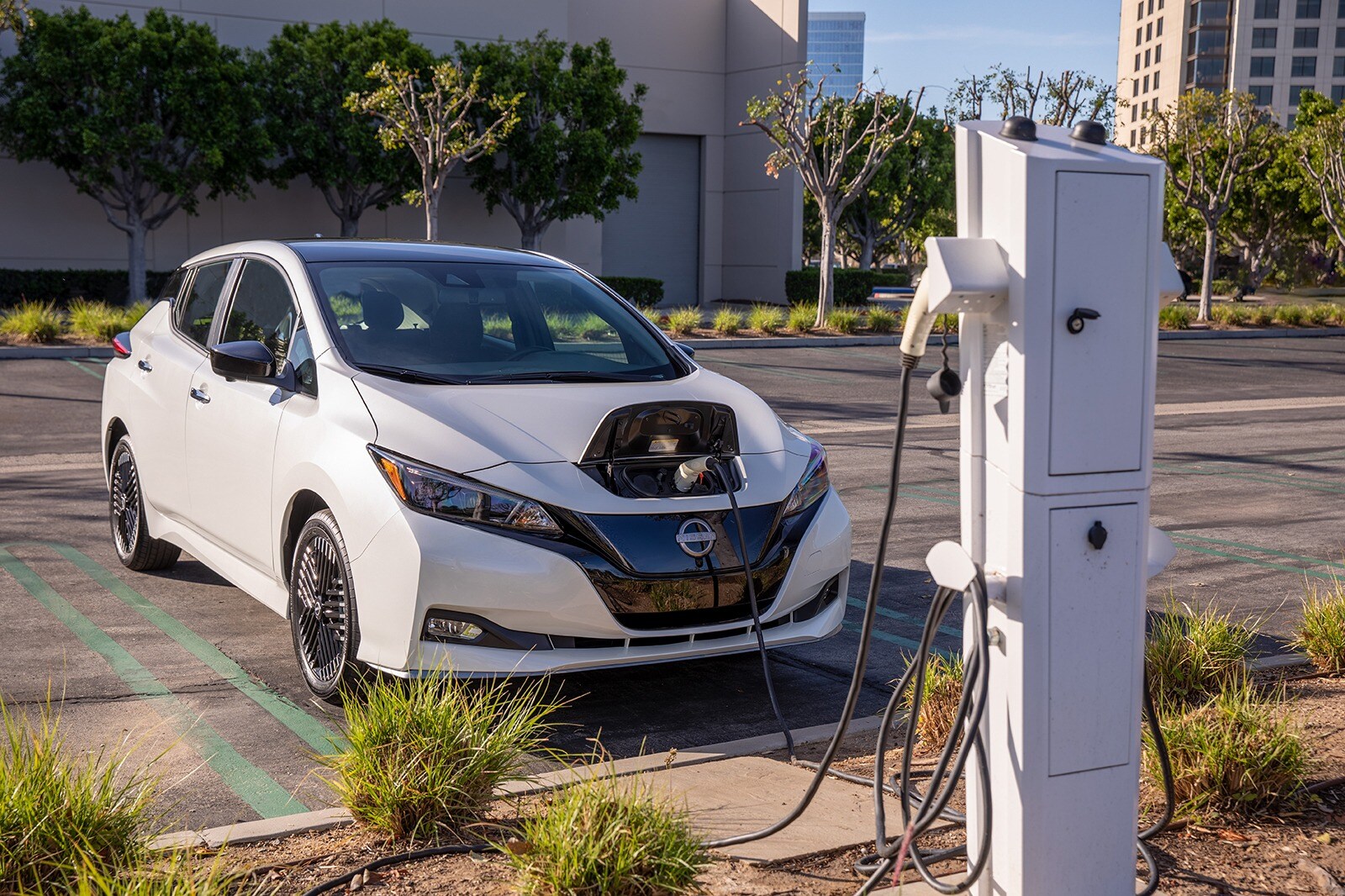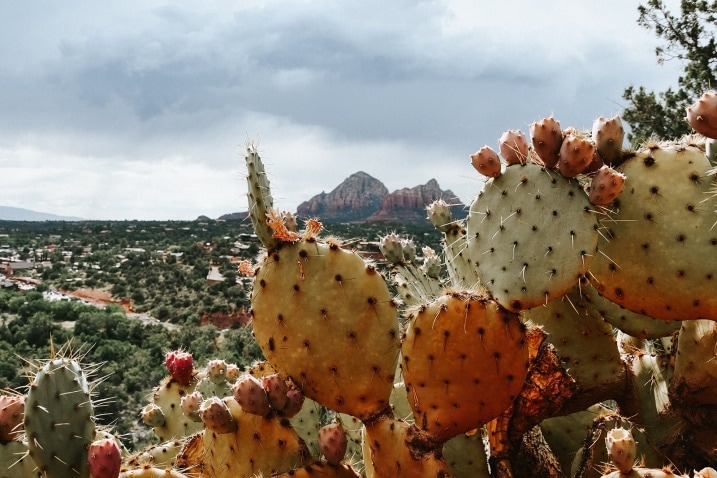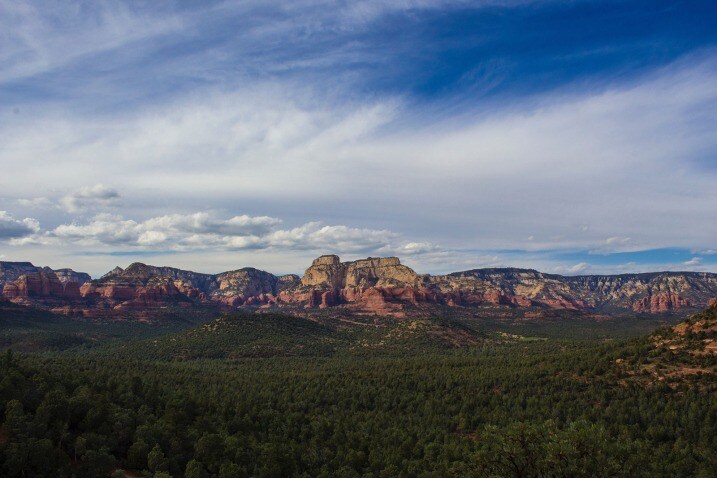With its soaring red cliffs, tree-lined hiking trails, off-roading areas, and rich Native American history, Sedona, Arizona, is a treat for the senses. While it might feel out of reach of LA for drivers with EV range anxiety, it's really no problem. Like any road trip, you just have to plan and prepare.
We start our morning early and plug into an EVgo charger in the Little Tokyo area of downtown Los Angeles to top off. We want to leave town with the battery around 90%, enough to get us to our first stop 125 miles away. Topping off won't take long, so we walk over to Cafe Dulce to load up on green tea, maple macadamia doughnuts and strong coffee.
Leaving downtown LA during rush hour isn't ideal, but it's unavoidable. We've got an 11-hour day ahead of us — about eight hours of driving and three hours charging — and want to arrive in Sedona while it's still light. With any luck, we'll catch spectacular sunset colors off the canyon walls, so an early start is critical. As much as we dislike the idea of threading the morning rush, slow-moving traffic and regenerative braking will actually help us conserve electricity. We can also access the carpool lane, which, while also typically slow-going at this hour, can help us keep momentum until we get beyond the city sprawl.
First stop: Yermo, California
Two hours later we roll into our first stop: Eddie World in Yermo, California. Eddie World claims to be the largest gas station in California. We'll take their word for it. With three small restaurants, massive candy, snacks and toy sections, and even a wall shrine area dedicated to the Los Angeles Lakers, Eddie World is huge.
Eddie World has several ChargePoint DC fast chargers, which will cost us about 40 cents per kWh. We'll be here for about 45 minutes, so we break out the folding bikes and ride over to nearby Liberty Sculpture Park, about a mile away. This scrubby desert field features artwork from Chinese artist Weiming Chen, whose sculptures range from a bust of Native American leader Crazy Horse to memorials of China's 1989 Tiananmen Square protests. It's certainly political and slightly bizarre, but it's food for thought and conversation during the next leg. We'll also pick up some real food from Eddie World before setting out again. Total charging cost: 33 kWh for about $13.
Second stop: Fenner, California
About 100 miles later, we stop at the Hi Sahara Oasis in Fenner. The area's history is interesting — a watering stop in the steam train era, then a lively desert outpost during the pre-interstate Route 66 era — but there's not much around the Oasis today. We connect to the Electrify America charger and settle in for another 45-minute charge session. The Oasis has food, drinks and snacks, and shaded tables under palm trees next to some shallow pools. It's a good place to stretch our legs, ingest some calories, and kill time under the palms. Total charging cost: 30.5 kWh for about $14.
Third stop: Kingman, Arizona
After another 100 miles, our battery is at 19% and it's time to charge up. We find an Electrify America station near a Smith's grocery store on Stockton Hill Road, one of Kingman's main drags. We need to charge to 90% for the long leg ahead, so we'll be here for an hour. To pass the time, we can wander the aisles of Walmart for forgotten supplies or the nearby Arc of Mohave County thrift store. We can walk a half-mile to Centennial Park and jump in the city pool for half an hour. Or we can eat a proper meal since it's past noon and we've thus far survived on doughnuts and gummy bears. A Five Guys burger shop across the street emerges as the consensus choice, and an hour later, we're off. Total charging costs: 40 kWh for about $17.
Fourth stop: Williams, Arizona
Even leaving Kingman with a 90% charge, the leg to Williams drains the battery faster than expected, largely due to the 5,000-foot rise in elevation. We keep an eye on our speed — 70 mph is still OK — and we're exercising restraint. We're driving slow enough to conserve battery but not get blown off the highway by passing traffic. If things start to look dicey with our range, we can pull off at the halfway mark in Seligman and visit the local KOA campground to top up. But we roll into Williams with no issues and a 16% charge. We only need to stay for 30 minutes to charge up for the final leg to Sedona. Total charging costs: 18 kWh for about $8.
Destination: Sedona, Arizona
We only needed to charge to 50% in Williams to make the last 70 miles to Sedona. But it's a slow 70 miles, with a mild climb into the mountains of Flagstaff, and eventually to the lower elevation of Sedona. Though it's 30-40 miles less than most of our earlier legs, it takes just as long at around 90 minutes. But we make it in time to see a spectacular pink and purple sky darken against the salmon and ochre backdrop of Sedona's sandstone buttes. We've got 20% charge remaining when we hook up to our hotel's charger for an overnight fill-up.


